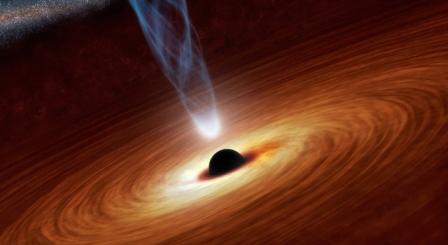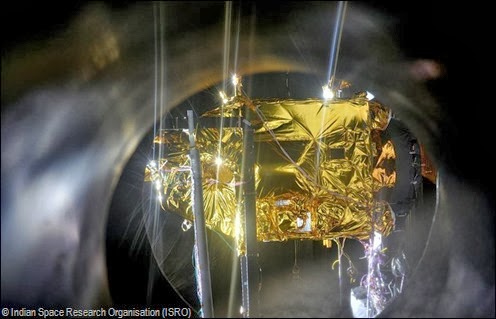
The regions around supermassive black holes shine brightly in X-rays. Photo: NASA/JPL-Caltech
WASHINGTON (PTI): NASA's black-hole hunting telescope has captured an extreme and rare event in the regions immediately surrounding a super massive black hole.
A compact source of X-rays that sits near the black hole, called the corona, has moved closer to the black hole over a period of just days.
"The corona recently collapsed in towards the black hole, with the result that the black hole's intense gravity pulled all the light down onto its surrounding disk, where material is spiralling inward," said Michael Parker of the Institute of Astronomy in Cambridge, UK, lead author of the research paper.
As the corona shifted closer to the black hole, the gravity of the black hole exerted a stronger tug on the X-rays emitted by it.
The result captured by the Nuclear Spectroscopic Telescope Array (NuSTAR) was an extreme blurring and stretching of the X-ray light. Such events had been observed previously, but never to this degree and in such detail.
Super massive black holes are thought to reside in the centres of all galaxies. Some are more massive and rotate faster than others.
The black hole, referred to as Markarian 335, or Mrk 335, is about 324 million light-years from Earth in the direction of the Pegasus constellation.
It is one of the most extreme of the systems for which the mass and spin rate have ever been measured.
The black hole squeezes about 10 million times the mass of our Sun into a region only 30 times the diameter of the Sun, and it spins so rapidly that space and time are dragged around with it.
Even though some light falls into a super massive black hole never to be seen again, other high-energy light emanates from both the corona and the surrounding accretion disk of superheated material.
Though astronomers are uncertain of the shape and temperature of coronas, they know that they contain particles that move close to the speed of light.
NASA's Swift satellite has monitored Mrk 335 for years, and recently noted a dramatic change in its X-ray brightness.
In what is called a target-of-opportunity observation, NuSTAR was redirected to take a look at high-energy X-rays from this source in the range of 3 to 79 kiloelectron volts.
This particular energy range offers astronomers a detailed look at what is happening near the event horizon, the region around a black hole from which light can no longer escape gravity's grasp.
The findings appear in the journal Monthly Notices of the Royal Astronomical Society.
 Previous Article
Previous Article Next Article
Next Article













The Indian Air Force, in its flight trials evaluation report submitted before the Defence Ministry l..
view articleAn insight into the Medium Multi-Role Combat Aircraft competition...
view articleSky enthusiasts can now spot the International Space Station (ISS) commanded by Indian-American astr..
view article